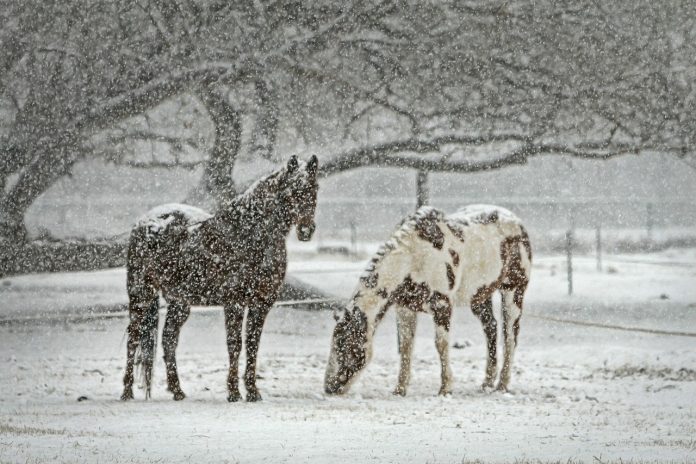“Dashing through the snow…in a one-horse open sleigh…”
Yes, it sounds amazing and looks beautiful, but the reality of the situation when the snow melts…is a different story.
I know all too well the challenges of winter and spring in regards to our beloved four-legged friends. Turnout can be quite an issue with mother nature.
So what options do livestock owners, particularly horse owners, have if they want to have a nice pasture and still allow their horses out? Being a horse owner myself, I know the challenges many horse owners have when it comes to “doing the right thing.”
It’s not that anyone deliberately manages their land improperly. Maybe they don’t know any better, maybe they don’t have the finances or maybe they don’t have the resources.
So, for those that may not know any better, here is a best management practice, commonly referred to as a BMP that can help horse owners keep their pastures and fields in the best condition possible.
Sacrifice Area
Unless you are lucky enough to have an indoor arena, or funds to build one, then you should think about a section of your pasture or even just a round pen, or a run that can become a “sacrifice area” for turnout. Because this time of year, horses should not be turned out in the pasture. Yes, this sounds crazy to horse owners.
If you don’t want to keep them off, or if you have to turn your horses outside, you should establish a “sacrifice area” turn-out.
All-weather paddock
Best case scenario would be an all-weather paddock. This is created by removing the topsoil, lining it with a geo-textile fabric, and then top dressing it with gravel, sand or crushed limestone. The paddock should be cleaned of manure occasionally, so it doesn’t eventually turn into a manure/mud lot.
Whatever sacrifice area you choose to let your horses out in, remember those four-legged 1,000-pound+ eating machines will easily tear up any sod or grass you might have in the pasture. You may have to feed hay in the sacrifice area while the pasture soil is soft.
The sacrifice area will probably have sediment and manure run-off, so it should definitely have some type of vegetative buffer (grass) around it so the potential for polluted run-off is minimized. But this paddock, round-pen or even a run for turn-out will be a lifesaver for the health of your horse and for the quality of your pasture!
Save it for later
So, when can you turn your horses out on pasture? Only you will know – walk the pasture and make sure it is firm, not soft and wet, or if it is frozen … then it might be OK. But consider the safety of your horse as well
Snow and ice can also be hazards and you know your animal better than anyone else. Since horses like to run around, and they will certainly be feeling good from staying cooped up, you better make sure they don’t tear up your pasture by turning them out too soon or hurt themselves in unfavorable ground conditions.
But remember the thaw and mud, and please keep your horses out of the pasture until the grass has gotten a good growth or start before those munching mouths attack it. Typically, the time of year is going to be late April to early May. It all depends on our wonderful Ohio weather.
If you resist the temptation to turn now and don’t tear up the fields, the forages and condition of your pasture will be worth it later. Until then, I hope you prioritize and make room in your budget to try to do at least one best management practice this upcoming year for your horses and your land. I’m sure you will be happy with the results.
For more equine educational materials, you can check out the Wayne SWCD’s website at www.wayneswcd.org and look at the Equine Education section. Have yourself the healthiest and merriest of all holidays!













